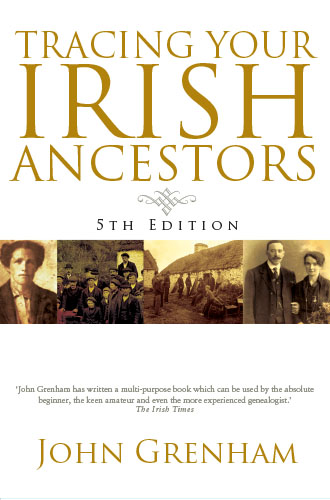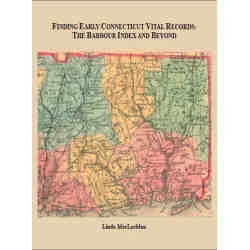
The 5th Edition of Tracing Your Irish Ancestors is now available in an extremely handsome hardcover edition at $38.50. In fact, you won’t find the hardcover edition anywhere else but on www.genealogical.com. This price represents a $10.50 reduction from the former paperback edition, which we have discontinued. Author John Grenham is the leading authority on Irish genealogy, and to prove it we have excerpted John’s overview of the recent growth in the availability of Irish gravestone inscriptions. Read on to get Mr. Grenham’s expert analysis on this subject.
“In the past six years the numbers and quality of gravestone transcripts online have increased dramatically. Three Irish groups are dedicated to transcription and free publication, www.discovereverafter.com, www.irishgraveyards.ie and www.historicgraves.com. The first two are companies supplying graveyard management services, with online transcript collections as a by-product. Discovereverafter is based in Derry, with most of its transcripts from counties Derry, Tyrone and Armagh (143 graveyards, August 2018). Irishgraveyards is based in Castlebar, and covers mainly Mayo, Galway and Donegal (74 graveyards). Historicgraves depends on volunteer community projects and records much more than the inscriptions, going into the detail of the heritage of each graveyard, photos and maps. It currently has transcripts for 484 cemeteries, mostly in Cork, Limerick and Tipperary, though there are significant numbers elsewhere. Parish-by-parish details are at johngrenham.com.
“Many of the collections of transcripts held by local heritage centres are beginning to appear online at rootsireland. For counties where this is the case, the name of the relevant centre is supplied. Further details will be found in Chapter Fifteen of Tracing Your Irish Ancestors, ‘Services’. This section does not cover the transcripts published in the Journal of the Association for the Preservation of the Memorials of the Dead, since the records are not treated in a geographically consistent way. Nonetheless, over the 47 years of its existence between 1888 and 1934, the Journal published a huge volume of inscriptions, many of which have since been destroyed. A composite index to surnames and places for the first twenty years of publication was published in 1910; the remaining volumes have their own indexes. The journals up to 1909 are online at www.archive.org. An index to the coats of arms in the Journal compiled by the Genealogical Office is online at goo.gl/hLntru.
“NLI call numbers for the local history journals or local histories will be found in the sections dealing specifically with the journals and histories. The listing for online gravestones transcripts is not comprehensive. The largest sites for volunteer-submitted transcripts are www.findagrave.com and www.interment.net. Many of the transcripts on these are only partial. The most durable site is www.interment.net, and where it holds significant numbers for a county, this is indicated. The IGP archives (www.igp-web.com/IGPArchives) also have significant numbers of volunteer headstone photos and transcripts.”
It’s insights like these that make the hardcover edition of Tracing Your Irish Ancestors your unbeatable source for finding ancestors in the Emerald Isle.





